Astell&Kern Acro CA1000T Transportable Tube DAP – The Mightiest Music Player
Astell&Kern Acro CA1000T is a $2299 USD Tube DAP or Digital Audio Player, with a display, microSD slot, insane-level 4 headphone outputs, volume wheel, separate charging and USB Data ports, RCA outputs, 4.4mm Line In, and Optical, Coaxial Input. The only players that really compete are other Astell & Kern music Players, but it will be thoroughly compared to all the other flagship music players available at the moment, including iBasso DX320 (1599 USD), Astell&Kern A&Ultima SP2000T (2500 USD), Lotoo PAW 6000 (1200 USD), iBasso DX220 MAX (1880 USD), and HIFIMAN R2R2000 (2500 USD). Given the price point of CA1000T, as well as its ultra high driving power, I’ll also be doing pairings with Dita Perpetua (2999 USD), Audeze MM-500 (1699 USD), Westone MACH 60 (1100 USD), FiR Audio Frontier Series NE4 (2299 USD), and HIFIMAN HE1000 V2 (2999 USD).
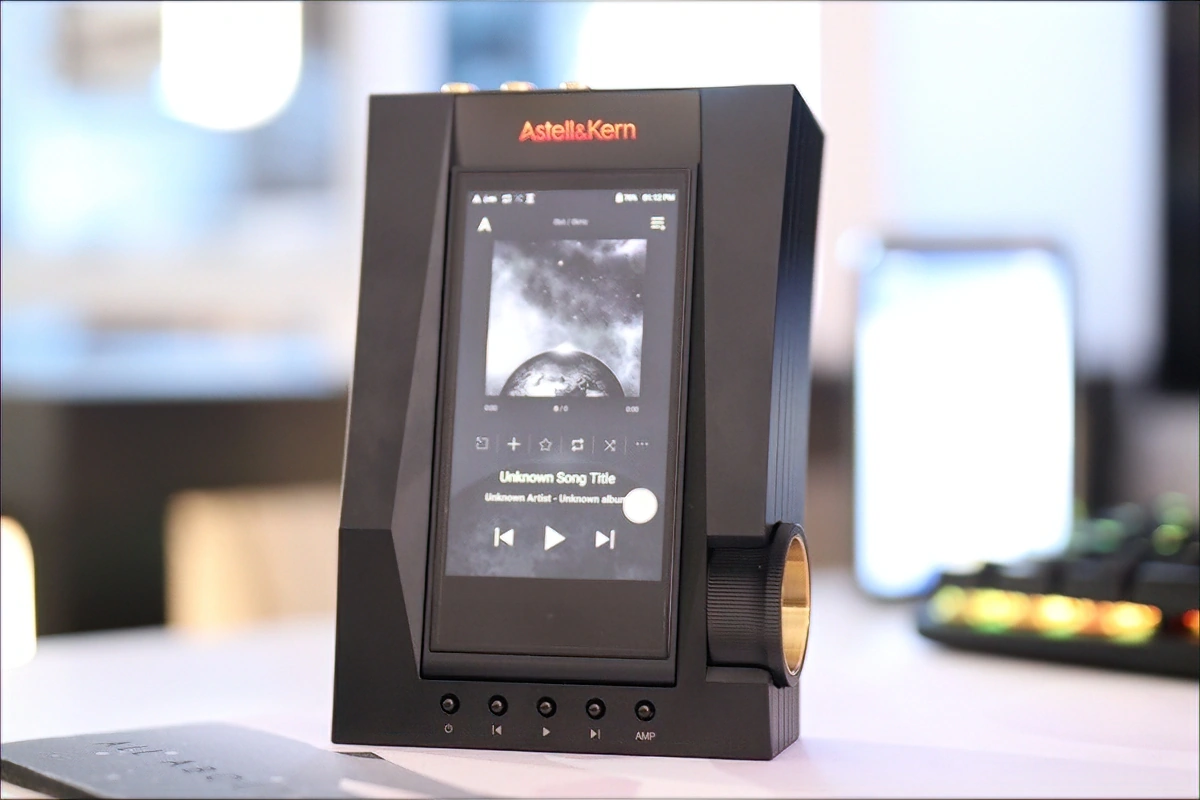
Introduction
Huge DAPs made to be just transportable are not something new and I even reviewed one years ago, when we had the chance to explore together the mighty iBasso DX220 MAX, but most of them have been a hit and miss experience. With the exception of the said DX220 MAX, most transportable DAPs are not just not exactly transportable, but actually a bit of a headache to deal with, especially those made by FiiO that use fans to cool off those DAPs. I know most of you guys use open-back headphones, so a music player using fans is not just comically wrong, but simply not going to work for music lovers who want to enjoy music at the highest definitions possible. Astell&Kern is one company I trust to make a technologically advanced product, and unlike smartphones that have been stagnating for a few years now, music players have been evolving a lot with every year, and Astell&Kern is one of the leading companies when it comes to development of new and effective tech, and one of the companies that offers outstanding warranty and support for their customers. This being said, Astell&Kern is physically situated in Korea, so your best experience would be purchasing those DAPs from local shops, including Amazon, where you’re likely to get faster shipping times and faster, more effective warranty. Please keep in mind that the unit I am reviewing today is the CA1000T, which is different from the CA1000, the T at the end of the name indicating that this one uses a NuTube AMP design.
It should be noted that I have absolutely no affiliation with Astell&Kern. I’d like to thank Astell&Kern for providing the sample for this review. This review reflects my personal experience with the Astell&Kern Acro CA1000T Music Player. Every opinion expressed is mine and I stand by it. The purpose of this review is to help those interested in the Astell&Kern Acro CA1000T DAP find their next music companion.
Product Link
You can grab one from www.amazon.com here: https://amzn.to/41ktsoh
You can grab one from the official store here: https://us.astellnkern.com/products/acro-ca1000t
If you’re in the UK, you can grab one from www.amazon.co.uk here: https://amzn.to/3IsPBrL
And if you’re from Europe, you can grab one from www.amazon.de here: https://amzn.to/3XVdj5W
Build Quality/Aesthetics
I quickly became aware while working on the review that CA1000T looks much less interesting in photos than it is in reality, and somehow my camera can’t quite capture its beauty and design as well as my eyes, but this is a really thick DAP that you basically place on your table, next to you, and which you connect to two USB Type-C cables, one for power and one for data. As far as I know, you can’t use it with a single cable, and this whole design is made this way so that you’re getting the best sonics possible. You don’t have to worry, as I can confirm from the start that Astell&Kern designed the DAP in such a way that it stops charging if you keep it connected for a longer period of time. It comes with a 256B Internal Memory that’s super FAST, NAND type, and it can be used to store Tidal offline files and such.
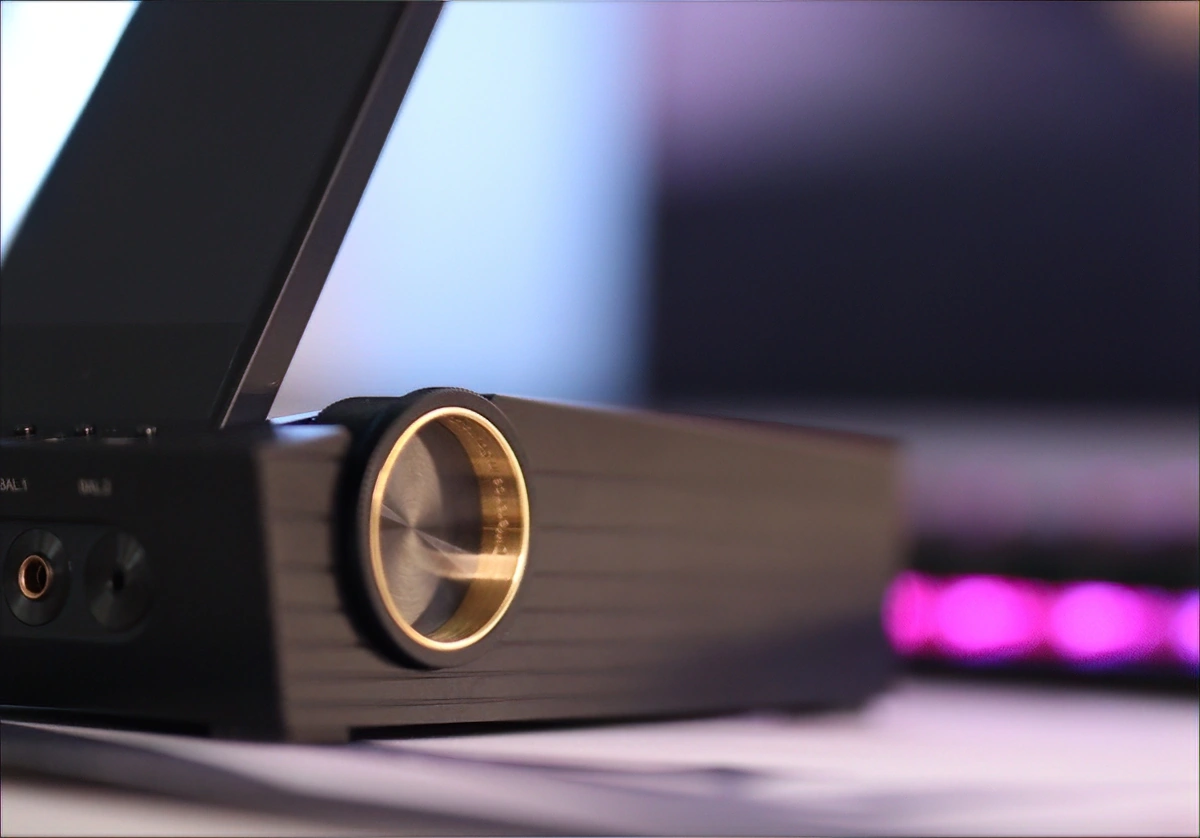
We have what I could consider a king of DAPs, or Digital Audio Players, but this one is a thick and heavy boii, to the point of the CA1000T having most uses on the desk of a music lover. The company is so aware of this that instead of including a transport case, they included rubber feet, so that CA1000T is stable on your desk. This being said, compared to your average DAP, CA1000T is considerably more versatile and more functional, with so much more you can do with it, even compared to your high-end DAP like iBasso DX320, or Astell&Kern SP2000T. The first thing you’ll notice with CA1000T is that you have 4 headphone outputs at the front, so with it you’ll never have to use an adapter for basically anything, it comes with a 3.5mm Single Ended output, a 6.3mm Single Ended output, but also a 2.5mm Balanced Output, and a 4.4mm Balanced output, being perfect regardless what connector your headphones and IEMs have.
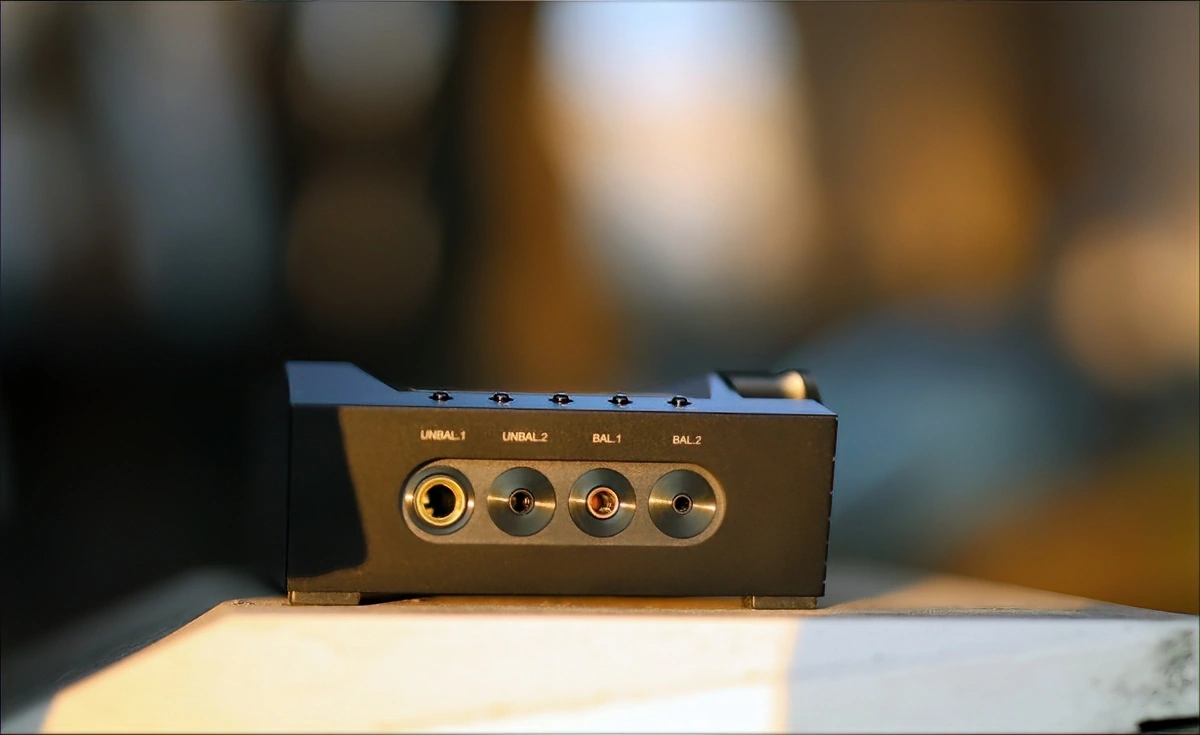
The front of the unit also has 5 buttons, one for on/off, three playback buttons, and an AMP button that’s actually usable even while in DAC mode, to configure the Gain level, and what kind of AMP you’re currently using. CA1000T is different from CA1000, the one that most people have reviewed, as CA1000T has a better output, Dual ES9039M PRO DACs, and Dual Vacuum Tubes, along with 15Vrms max output. On the right side of the unit, we have a large volume wheel with steps, which reminds me a bit of old steamboats, especially as CA1000T has a display that can either sit flush with CA1000T, or be raised, to offer an experience similar to having a DAP or a typical portable player docked in a cradle. We have an 1OHM of impedance for the single ended outputs, and 2 OHMs of impedance for the balanced outputs.
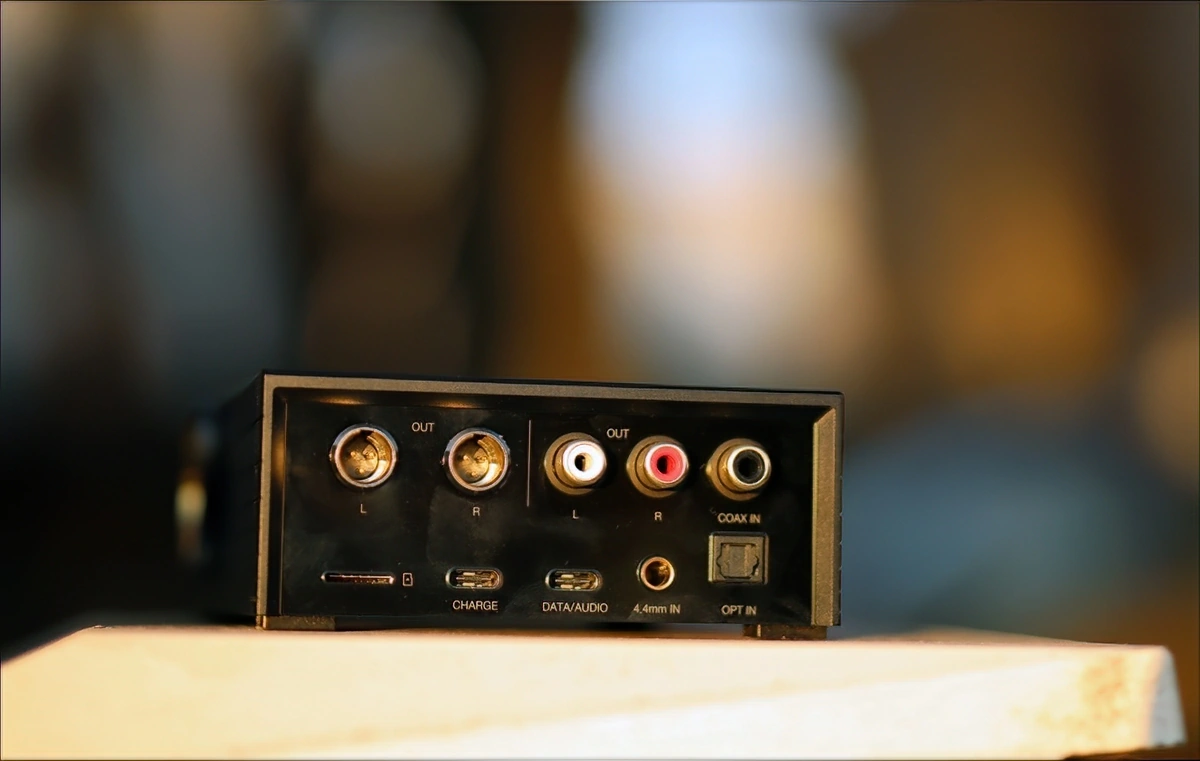
We get a lot of action at the back of the unit as well, with two USB inputs, one for power and one for data, and a microSD input for a card up to 2TB. But we also have extremely rare functions, including a 4.4mm Balanced input, so you can use the Solid State / Tube amp of CA1000T with other DACs, an Optical input, and a Coaxial Input. The Line Outputs include a standard RCA output, and a super rare mini XLR Balanced output. Despite the CA1000T having dual power inputs, it also has a battery, and can be used portably, like any other DAP, or used without taking in power if you want to listen to it while you’re in bed.
It is hard to compare CA1000T to most other DACs as it is the first DAP to use a Dual ESS ES9039MPRO DAC. It is also the first DAP to have 4 levels of gain, and to be able to drive both full sized headphones and IEMs with zero distortion and background noise. The AMP system has a triple AMP design, with Dual Vacuum Tube stage. Of course, we also have streaming, Wifi, Bluetooth, USB DAC functions, and more that we’ll explore in the section below. There is an LED indicator at the back of the CA1000T DAP, which can show you if it is currently on and working, and there is also a selection of screen protectors included in the package, and they are the matte type, as those found with Astell&Kern SE180, which make it look really professional and sleek. The LED light will be RED for redbook, green for 24-bit files, Blue for 32-Bit, and Purple for DSD files. The AMP mode also changes the color, with full OP-AMP making it red, Tube making it orange, and hybrid making it Blue Green.
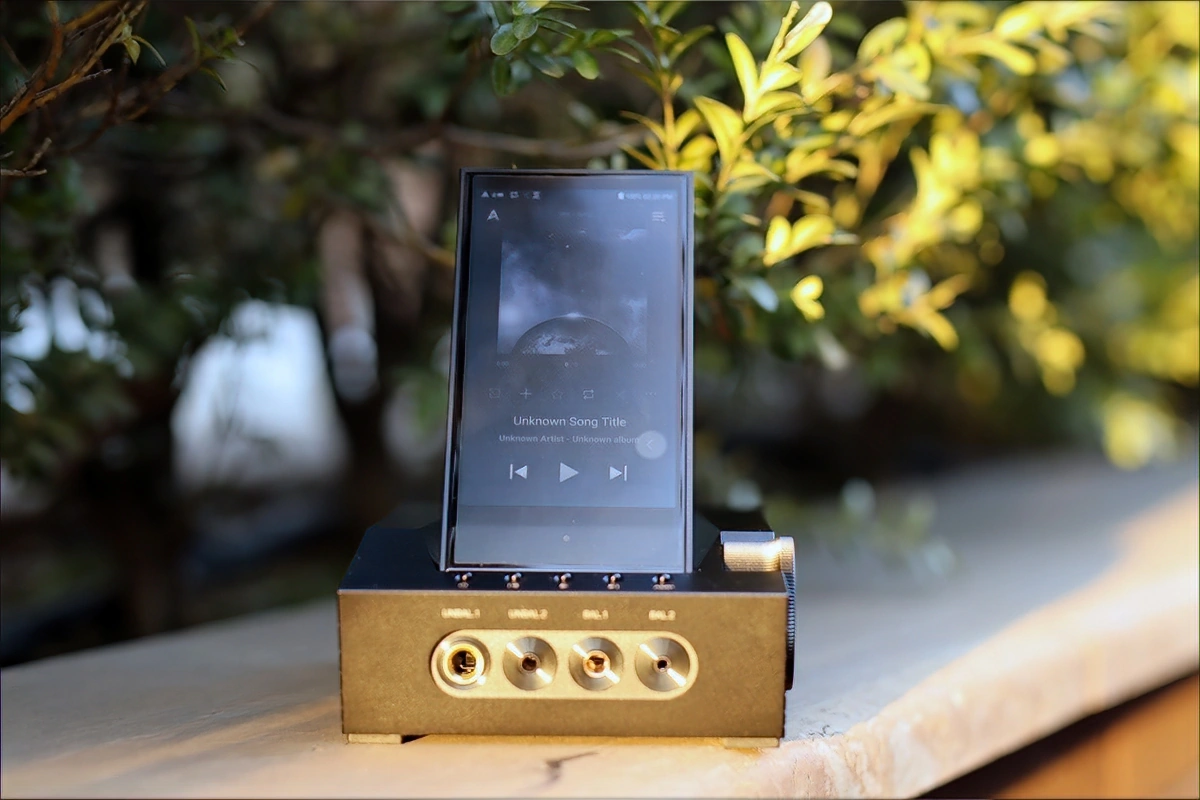
Astell&Kern wanted to make sure that you have the best experience, so they used a super sharp, above retina display of 4.1″, with a resolution of 720*1280, with super good colors. The display wiggles a bit after pressing on it, if it is raised, but it can sit perfectly flush with the unit if you need it to. You can configure how fast it turns off, and I found that I subjectively like to see the unit with the display raised on my desk.
The battery of CA1000T is a huge 10100 mAh 3.8V Li-Polymer Battery, with up to 11 hours of life if listening to flac files, over the unbalanced output, at with low gain and 40 volume. This being said, even when I tested it with FLAC, Super Gain (Maximum), LCD on a lot of the time, volume set to 100-130 / 150 (you can’t need the max volume most of the time), and with Tube mode , the battery life is still 7-8 hours, so plenty of juice for what is about to be the most powerful portable music player ever designed. In actual usage, CA1000T gets warm, but not super hot. It takes almost 5 hours to charge the CA1000T, and it supports PD2.0 fast charging, with 9V/3A, but you can use it while it is charging, and it was designed to be used while charging. Astell&Kern designed it so that the battery would not degrade if used as a desktop DAC AMP 100% of the time. The charging stops after it is fully charged, and it sips power only when needed, and when it detects that it was left to charge for long periods of time, the battery stops charging at 80%, to save battery health. The battery is used to filter the current going in, so don’t be afraid that you’ll lose any life over using it as it is intended, as it used to happen with the original Chord Mojo.
If you’re into measurements, the SNR is 108 dB for the Unbalanced output, and 112 dB for the balanced output. The crosstalk is -115dB for the unbalanced output, and -112dB for the balanced output. The THD is 0.004% for the unbalanced output, and 0.002% for the balanced output. Those are all excellent results, and CA1000T even has a clock jitter of 25ps, which is super good.
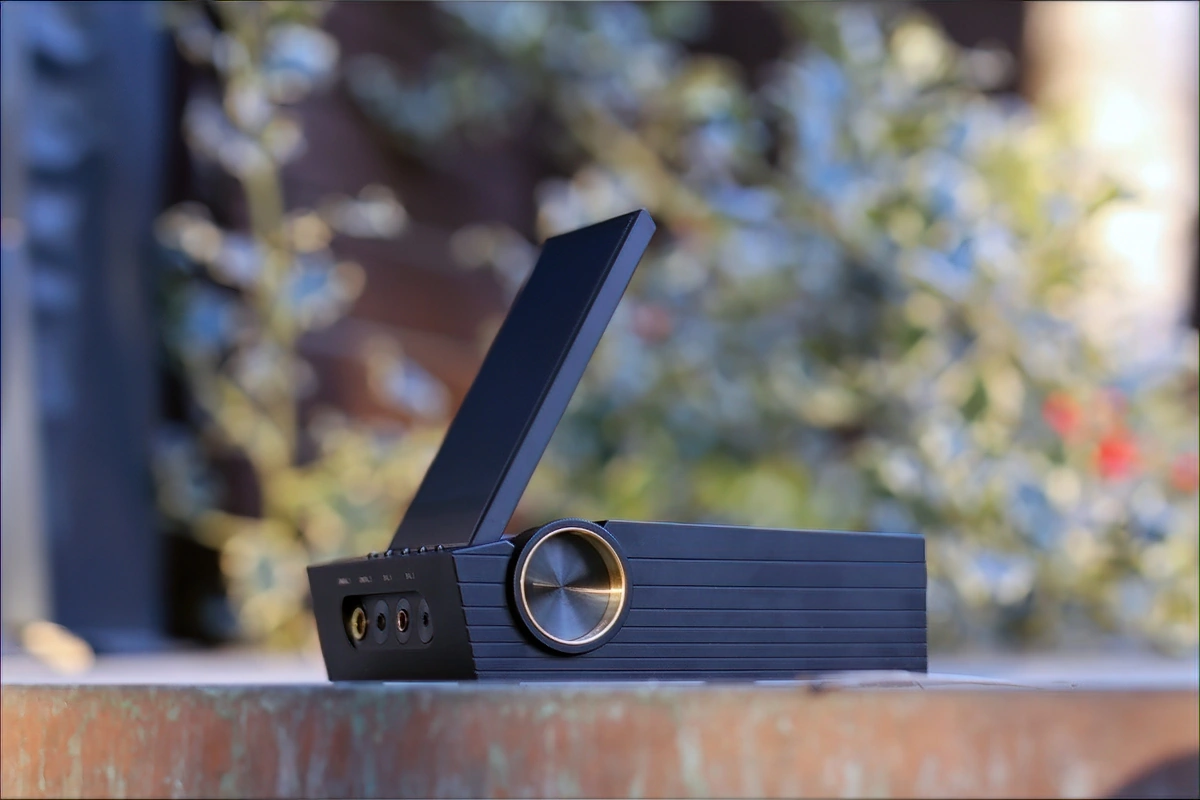
Astell & Kern also has a proprietary TERATON Alpha technology, which is their Ultimate Sound Solution. This has been first seen in Astell & Kern SP2000T, for implementing the Tube AMP with a Solid State AMP and creating the Hybrid mode. The TERATON Alpha includes a Class A AMP design, a gain section free of distortion (I can confirm that it doesn’t really matter what gain level you’re using, it never increases the distortion with CA1000T), Efficient Current Control, Efficient Power Noise Removal, and True Balanced Circuit without signal loss. This is one of the gems that gives CA1000T the magical sound it has, and Astell&Kern are known for doing endless research on how to improve the sonics of their products. Charging up and warming up the Tube AMP part of CA1000T takes about 5 seconds, and you can hear how it improves in those 5 seconds, but thanks to the diminutive size of the Korg NuTube Triodes, you don’t have to leave it warming for half an hour, like with most Tube-Based AMPs.
The balanced stage of CA1000T is considerably interesting, as it has a Dual DAC, Dual Vacuum tube stage, basically left and right channels being processed independently by their own DAC and Vacuum tube. The tubes are Twin Triode KORG NuTubes, similar to those implemented in SP2000T, which I reviewed in the past. Of course, you can use the Hybrid Mode to get the warmth, and magical midrange of the Tube AMP, and the enhanced clarity and resolution of the Solid State AMP, but more on how it actually sounds in the Sound Quality part of the review.
Under The Hood / Functionality / Software
The most important feature that Astell&Kern ACRO CA1000T has but which you don’t really see is the Wifi part, which allows it to stream music. It has support for Apple Music, FLO, Deezer, Qobuz, Moov, QQMusic, AmazonMusic, Spotify and most importantly, Tidal. Those aren’t just theoretically supported as with some Android DAPs that can freeze randomly or Crash, and we see again the proficiency of Astell & Kern as with CA1000T everything works smoothly and there are no interruptions from the music listening experience. Astell&Kern Acro CA1000T can be used as a certified Roon Ready Endpoint, and it has AK connect and AK File Drop too. It can decode MQA X16, and even can decode MQA through the USB input, if used as a USB DAC, and CA1000T is the only DAP I know of which can use MQA via the Optical input / output. The MQA support is 16X Full Decode / Hardware Renderer.
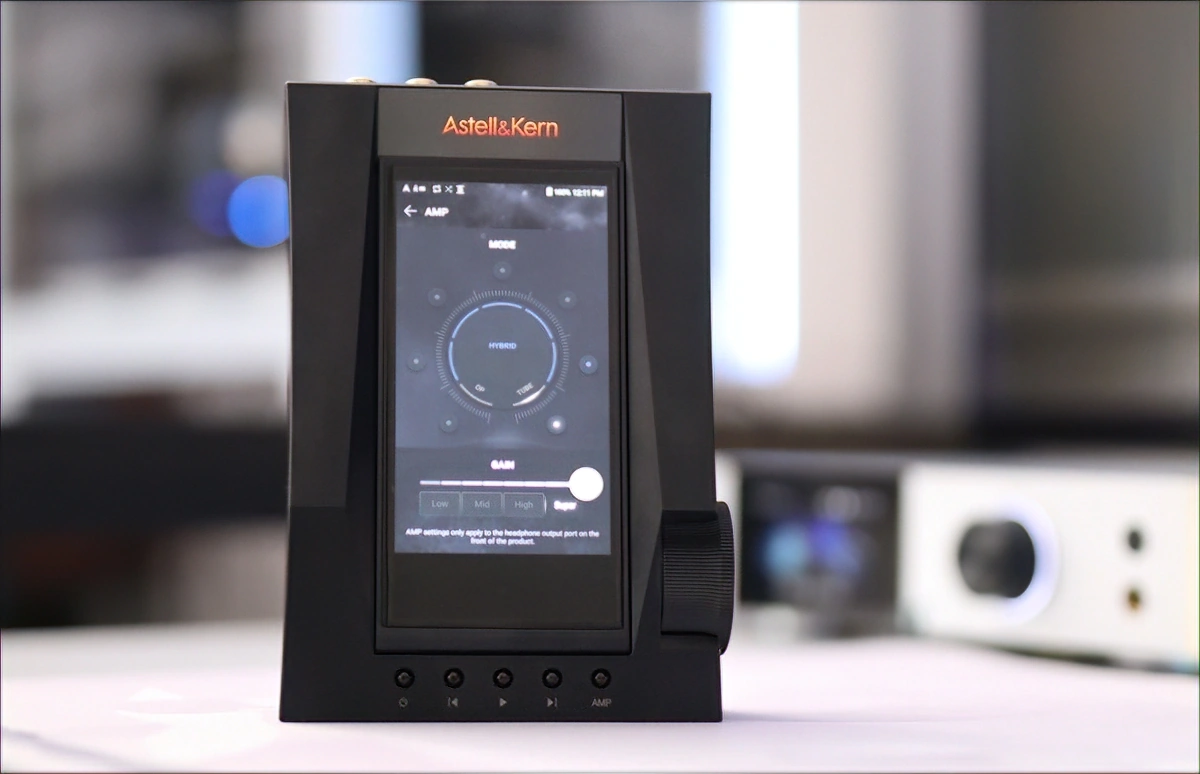
There is a standard EQualizer, which works well, there’s true Gapless Playback, Left – Right Balance, creation of playlists on the go, and ReplayGain support. The default music player is basically the same as the one seen in most Astell & Kern music players, so it would be helpful to read my review of Astell&Kern SE180 and Astell&Kern SP2000T to get a better idea about it.
We have Bluetooth with LDAC, both if using Acro CA1000T as a bluetooth transmitter to power a pair of Bluetooth IEMs of Bluetooth Headphones, and I was able to use CA1000T as a Bluetooth Sink as well, sending signal from my Motorola Edge 30 Ultra to the DAP. There is no extra noise that I could hear when using Acro CA1000T via Bluetooth, and it sounds super nice, the Bluetooth being optimized for it. If you have multiple sources of interference nearby, the signal may drop, especially if you’re using LDAC with sound quality priority. The important part is that it does not add to the noise of the sound, even if using the Tube mode or Hybrid mode. There is no real reason to use Astell & Kern Acro CA1000T as a Bluetooth sink though, since it has support even for Youtube, if going to the V-Link setting, and the sound is much much better than the Bluetooth sound.
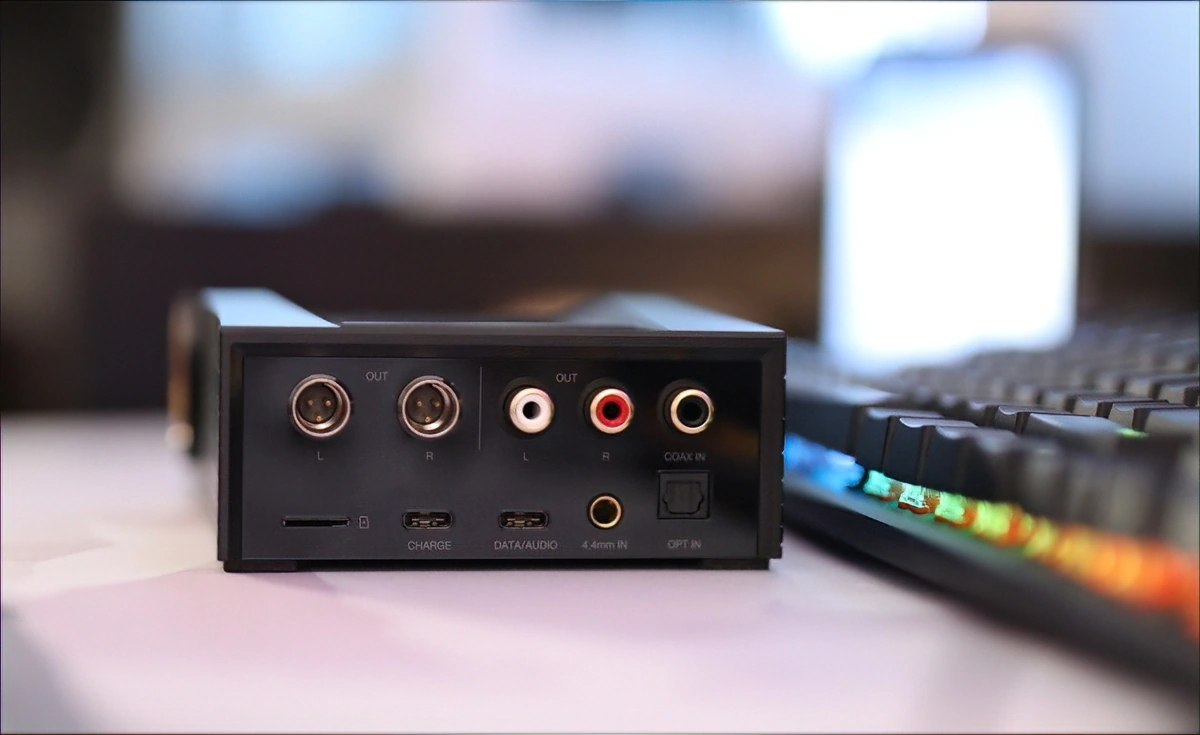
With tube and NuTube based DAPs, like iBasso DX320 using the Tube module, some users complained that the sound has a bit of extra noise if using it via Wifi for streaming, with the Tube Mode enabled. With Astell & Kern Acro CA1000T I can happily report that I’ve been doing intense streaming, even of video content via V-Link (Youtube), for songs with video content, and I can hear absolutely no noise, and no problems, the sound is clean, crystal clear with no added noise from the Tube AMP interfering with the Wifi module. This is the same for Tube Mode, Hybrid Mode and full Solid State mode. I had the surprise of the unit being so fast that my own Audiophile-Heaven Playlist loaded in just a second, and everything played smoothly. I should mention that I’m situated very close to my wifi router, to make sure I introduce as much distortion as possible to test whether Astell & Kern could implement the legendary Astell & Kern Teraton Alpha technology to fully isolate it from noise and interference.
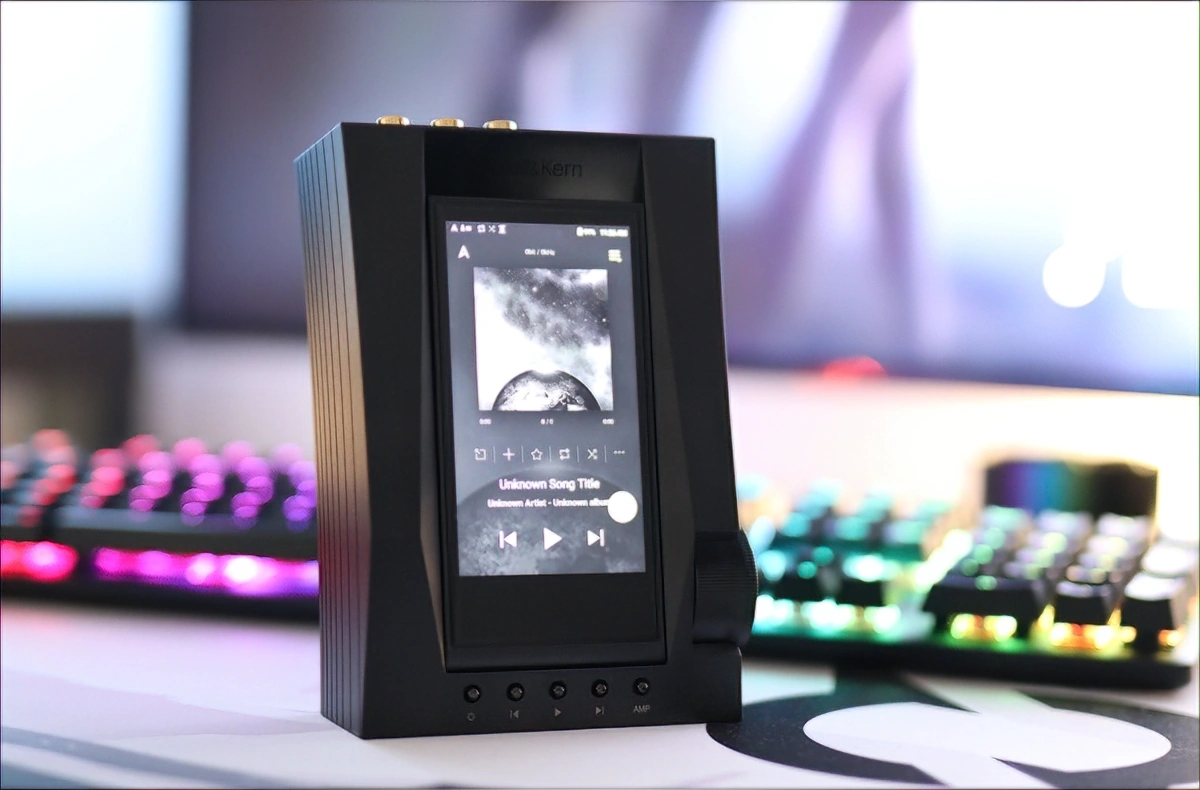
If you’re concerned about the lifespan of the 6P1 Korg NuTubes, they have a huge estimated lifespan of 30.000 hours, which translates to 1250 days of them working non-stop, or 3.42 years if leaving the unit on non-stop. You generally can’t listen to music for more than 7-8 hours a day, so you can expect this number to be around 10.2 years, for a more realistic number. I added this in the Functionality / Software part of today’s review, because it is a good moment to remind you that because NuTubes need a really short warming up time, Acro CA1000T will actually use a battery-saving function, and will turn off the sound output, if it hasn’t received signal for a while. This is something I noticed with IEMs, where you can tell when the sound part is on and off. This means that even if you left Acro CA1000T continuously plugged in, and used it 8 hours a day, at maximum volume, you could enjoy it for more than 10 years, so although those are tubes, they aren’t going to die any time soon. Another important thing to keep in mind is that 6P1 NuTube modules are replaceable, and although they are not as plug and play as replacing a battery is, it is doable, and Astell&Kern has some of the best warranties available out there, and will be more than happy to help you if you ever needed those replaced. Using the Full Tube mode, or the Hybrid mode will make CA1000T slightly warmer, but it is never more than warm to the touch, even after listening for hours at max volume, so heat is not a problem. With a weight of 980 grams, and with a case made of metal, it can easily dissipate the heat as needed.
Adding to the list of nifty features that Acro CA1000T has is the USB DAC mode, which I consider to be the best implemented function I heard to date. While DAPs like iBasso DX320 use a new ROHM DAC that has some USB DAC delay in some situations, Acro CA1000T has a USB DAC delay of 0 ms, perfect for playing games, watching videos, and doing basically everything. For the USB DAC function, on both windows 10 and windows 11, there is no driver needed, it works by default only by engaging the USB DAC mode on Acro CA1000T.
The software is actually rather fast, and although CA1000T doesn’t use a smartphone CPU, it does everything it has to really well. You have to make sure that you have a good Wifi signal, and Bluetooth signal if streaming, but for playing music as a USB DAC, from its own memory, and microSD card, I experienced zero dropouts, zero problems and zero noise. It is all darn perfect, and it is a first for me saying this, as I pointed out in most of my reviews when products had delays, or random noise. You can select favorites, to store a list of your best songs, and you can browse both by Folder, Songs, Artists, Albums, and Genre. MQS, and DSD files are browsed and shown separately.
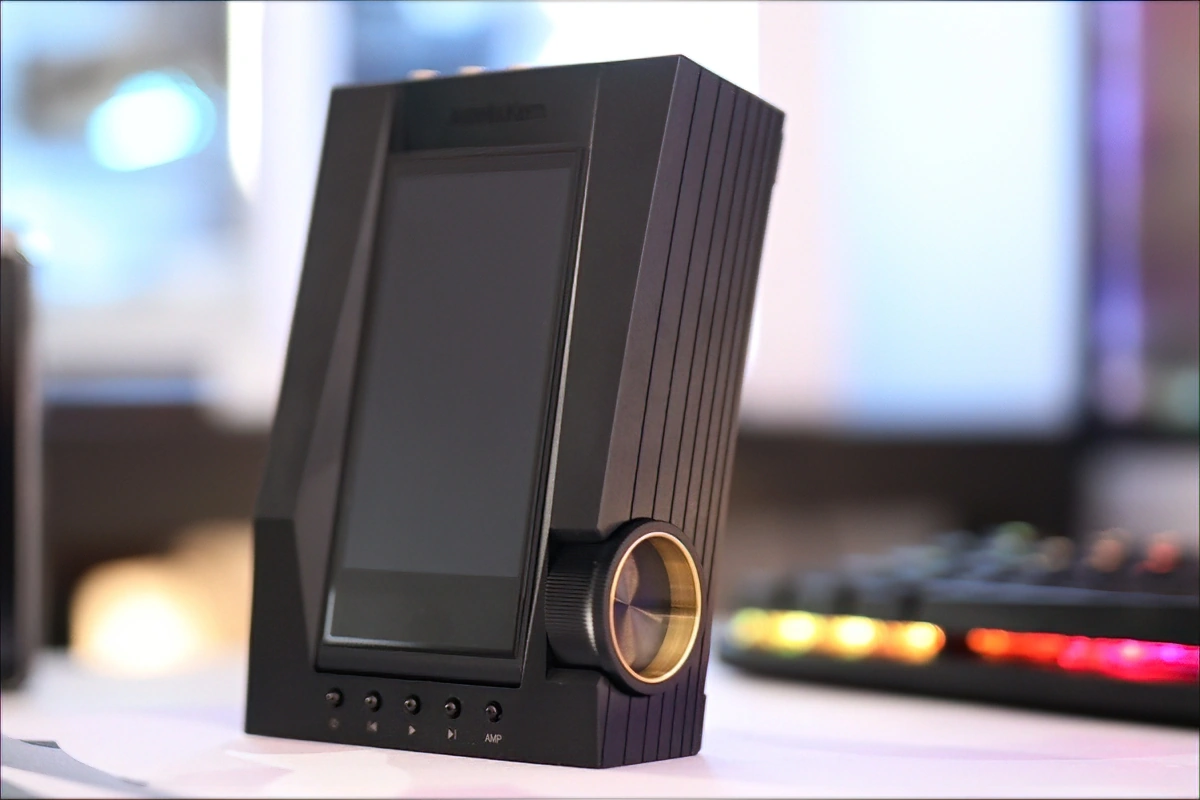
You can activate a series of DSPs, including a crossfeed effect, to increase the soundstage of headphones, basically feeding some signal from the left channel into the right channel, and vice versa, creating the feeling of space better for most music. This is actually effective, especially for IEMs, but for open-back headphones, and even for IEMs, it lowers separation, instrument definition and details a bit. It also lowers the volume a bit. The EQ function has no drawbacks and works perfectly. Oddly and happily, those functions seem to be working even when the CA1000T is used as a USB DAC. The EQ function has an Advanced mode which makes Astell&Kern EQ more effective than all of the DAPs with parametric EQ, because it allows you to set the Gain level, Frequency, Q factor, and even fine tune the EQ level to a 0.01 level. Even better, you can use both the EQ and Crossfeed at the same time, even through the USB DAC mode. The AMP mode allows you to change the AMP mode, between Hybrid, Tube and OP-AMP Solid State mode, but this can be used and configured even while Acro CA1000T is in USB DAC mode.
Sound Quality
There’s a bit more to explore today than usual, so I’ll start with the obvious, and the first thing you should know is that for the best sonic performance, and to make sure you won’t burn your CA1000T, you should not use two pairs of headphones at the same time, even though it has multiple headphone outputs, as different impedances of those can damage it. This isn’t to say it wouldn’t work though. The list of headphones and IEMs used for today’s tests include Dita Perpetua, Dita Fidelity, Unique Melody Maven PRO, Unique Melody MEXT, HIFIMAN HE1000 V2, Audeze MM-500, Audeze LCD-5, iBasso SR2, Ambient Acoustics MAD16, FiR Audio NE4, and Spirit Torino SuperLeggera. Overall, with headphones there is absolutely no background noise or hissing, while with IEMs, there is a slight hissing, if using the Balanced port. That hissing with IEMs goes away as soon as you play any music, at any level and it is really quiet, but audible with sensitive IEMs, like Dita Perpetua. This is because the balanced output has an output impedance of 2 OHMs, and Astell&Kern actually recommends you to use Acro CA1000T with headphones with an impedance between 32 OHMs and 600 OHMs. Even IEMs with an impedance of 32 OHMs do not have that hissing usually, and I had the chance to test it with a pair of HD800S, and it can drive those perfectly well. I am willing to say that it is one of the very few sources on the market that can fully control Audeze LCD-5, without being the size of a shoe box (like Cyrus One Cast for example), but can also drive IEMs without background noise or other problems or artifacts.
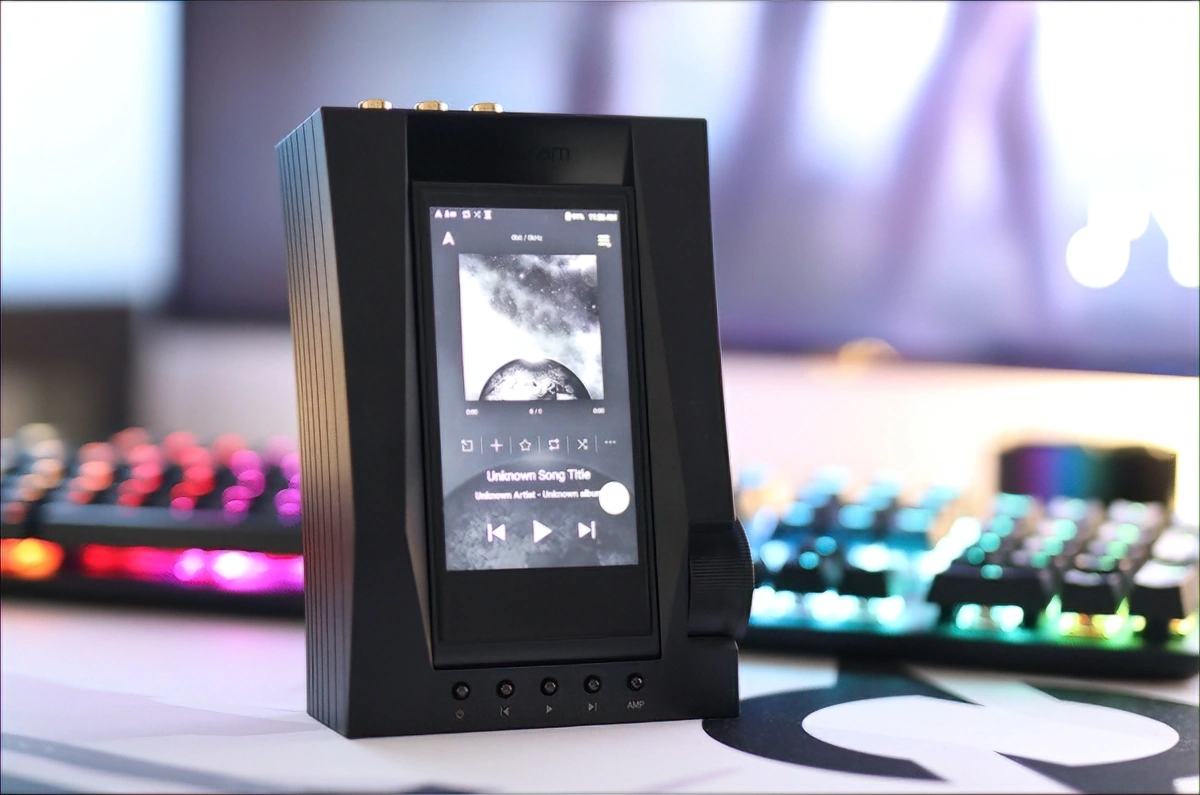
Besides the DSP effects that we discussed previously, there are three main ways you can use Acro CA1000T, either full Solid State OP-AMP mode, which is the default mode, Tube mode, which uses only the Korg NuTubes, and you also have the option to use it in a Hybrid mode that draws on the best from the other two modes. The Solid State mode has the best resolution, detail and clarity, with a pinpoint precision midrange, superb resolution, and outstanding overall dynamics / impact. The tube mode has a lower impact, and a lower dynamic, with a lower precision, but it has that superb midrange, and if I was to describe it in one word, that’s vivid. The detail level is not quite as strong, but there’s audibly more harmonic presence, more warmth, and a subjectively more pleasing listening experience. The tube mode surely is magical, and the midrange doesn’t just sound fuzzy and unclear, it is actually a bit clearer than the OP-AMP mode, guitars are more colorful, more realistic, everything sounds more pleasing, and adds more color, a better instrument separation, or at least better separation between the foreground and background instruments, making this the preferred mode for rock, metal, and music with guitars and trumpets in general. The OP-AMP mode sounds a bit better with electronic music, where the extra warmth and added harmonics don’t necessarily translate to a better experience.
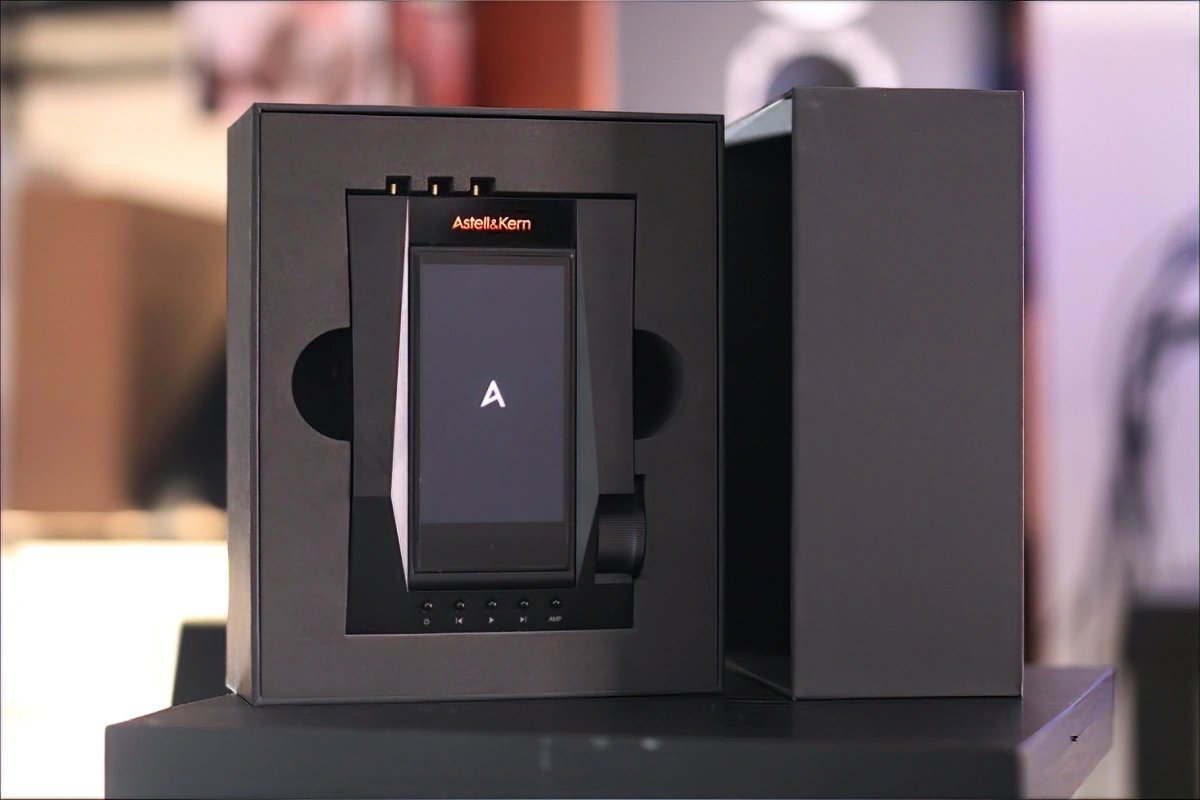
And then, there’s the Holy Grail of sound, the Hybrid mode. In this mode, you literally get everything promised, so switching to Hybrid from the OP-AMP mode will increase the warmth and how colorful / pleasing the midrange is, will make guitars moire colorful, better outlined, more vivid, and more realistic, and will give Acro CA1000T a more natural sound. Similarly, changing to the Hybrid mode from the full Tube mode will make the sound more clear, clean, and will improve the dynamics and the detail resolution drastically, to the point where the Hybrid mode right in the middle is the absolute sweet spot of sound with Acro CA1000T. You can fine tune this yourself, and add more Tube character, or more OP-AMP character, and this is the beauty of Astell&Kern’s TERATON Alpha and CA1000T sound in particular, they give you the possibility to tune it to your liking, be it as precise as possible, or as warm, romantic and euphonic as possible. To be honest, I am in between liking the Hybrid Mode and the Tube mode the best, for my listening, but I’m really happy to report that they really delivered on everything exactly as promised, making Acro CA1000T what it was supposed to be.
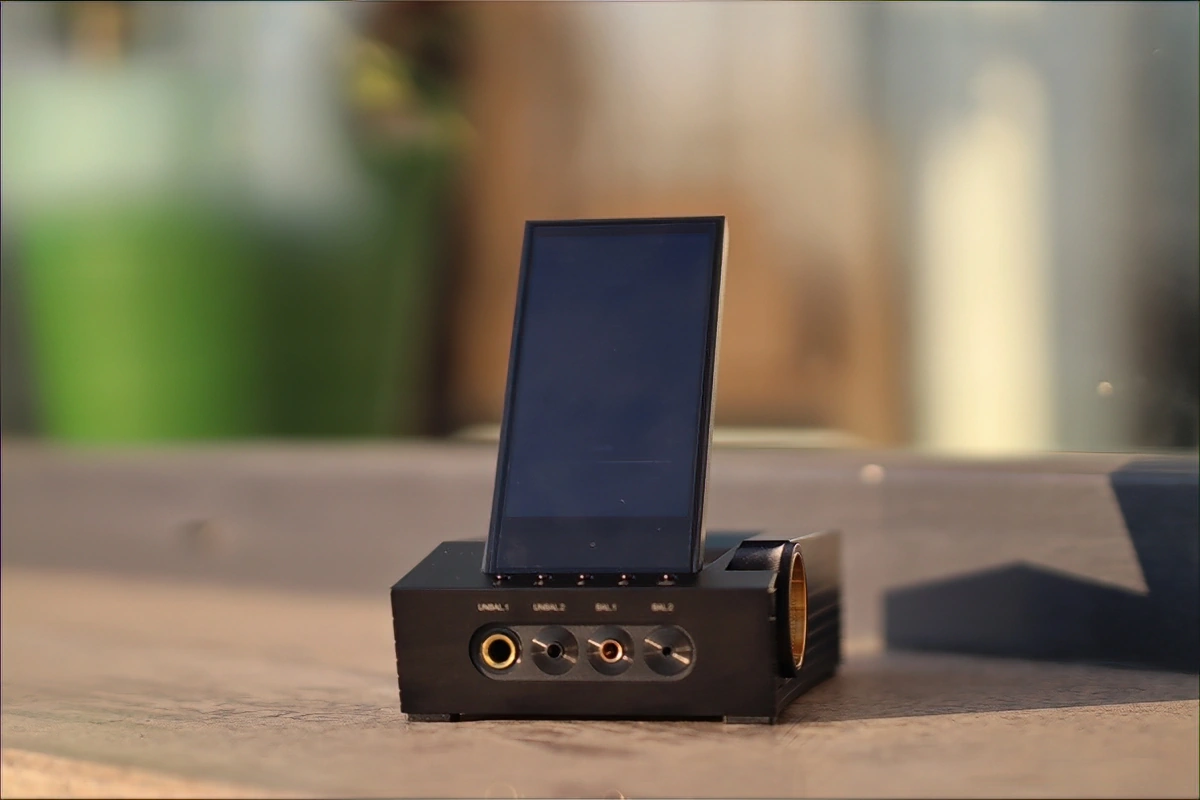
Starting with the bass, Astell&Kern have always been considered masters of bass, but not because they offer a colored tuning with their products, rather they offer the most qualitative bass you typically get with portables. The same can be said about CA1000T, it offers a really qualitative bass, clean, deep, rounded, smooth and free of distortion, a simply pleasing and natural bass. The bass has a tiny bit of extra uplift in the mid bass, and using fully solid state mode will actually sound more neutral, while full tube mode sounds warmer in the upper bass. At hybrid middle, which I found to be the best sounding mode for CA1000T, the sound is incredibly precise, clean and free of distortion, with that slight mid bass emphasis that gives music a specific fullness and sweetness, without making it slow or fuzzy. The sub bass has outstanding presence and impact, with a voluptuous presentation with IEMs like Dita Perpetua, while more neutral headphones are left neutral, Acro CA1000T having a very transparent presentation that doesn’t force a specific signature on other equipment.
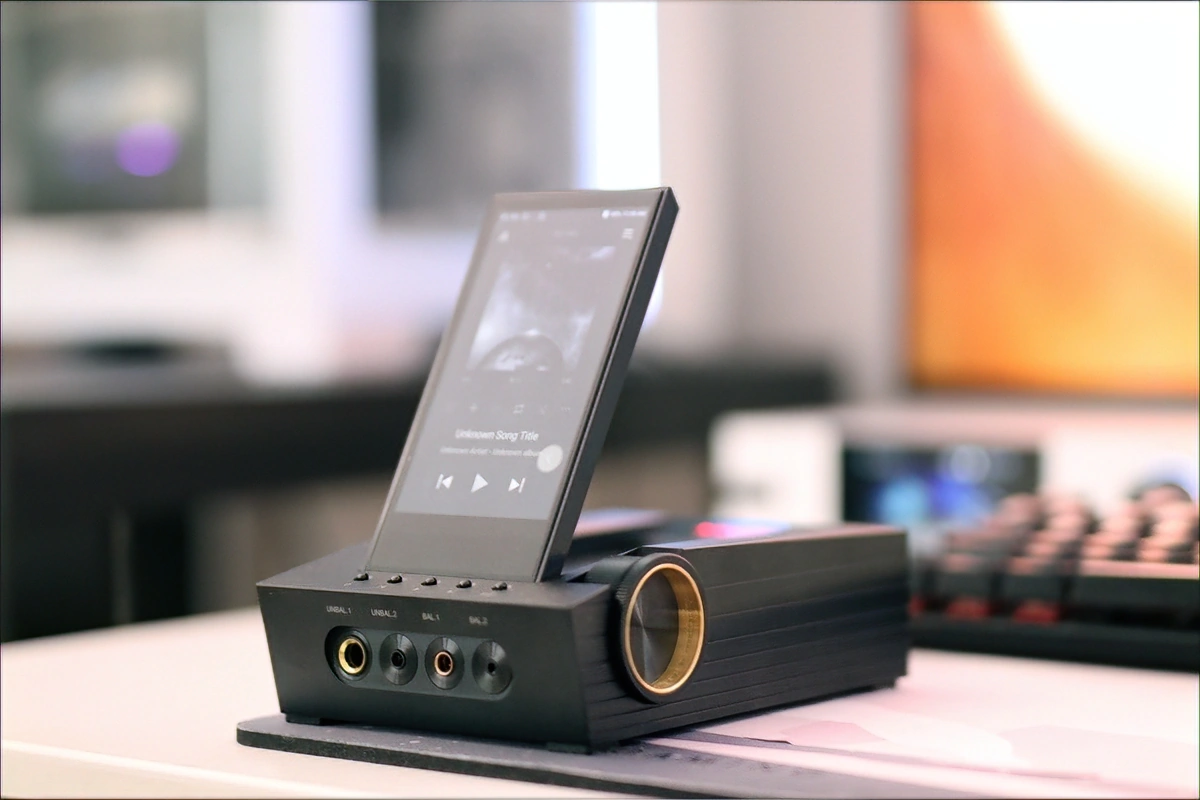
The midrange is where CA1000T really excels, as you’d expect from a high-end DAP. As I often note, midrange is where most of the music happens, and this will matter a lot for rock, metal, punk, rock, and basically all styles that are not purely electronic. CA1000T has an incredibly detailed, clean and well separated midrange, with outstanding instrument definition and dynamics. You are freely able to switch this for a fuzzy, warm, and more musical presentation that is fuller of harmonics, by engaging the full tube mode, or, you can get the best of both worlds by going with a hybrid node. I noticed that if using the hybrid mode, you keep the precision, clarity, and overall detail of the solid state mode, but you also get the sweeter and fuller presentation of the tube. Quite different from most tubes out there, and different even from the implementations of the Korg NuTubes, Astell&Kern’s CA1000T will have a really juicy and dynamic sound with the tube mode on, the sound doesn’t just get dull and warm, the tube mode brings guitars, voices and instruments to life, in a magical way. The Tube Mode is especially recommended when the headphones have a really low distortion already, for example with single dynamic driver IEMs, or IEMs that have a low distortion, also headphones with a low distortion, like Dita Perpetua, iBasso SR-2, and OLLO S5X. I would recommend keeping solid state or hybrid mode on for headphones that have planar magnetic drivers, or IEMs with multiple balanced armature designs, where the slightly lower dynamic of the tube, and the slightly higher THD can fill up the sound in a less pleasing way. To put it in words, engaging the tube mode is so much of an upgrade for Dita Perpetua and most headphones I tried with CA1000T, that it feels like you go from a midrange to a high-end headphone, not the difference in detail, but how much more vivid and punchy the sound becomes with the tube mode on. Then, if you use the hybrid mode, you also get outstanding clarity and resolution, a precision that keeps music interesting and sparkly. Especially for instruments like guitars, with the hybrid mode, you get a texture that’s super similar to a high-end guitar tube amplifier that’s used to play live on big stages. I can freely compare those as I’m working more and more on my guitar playing, and CA1000T is one of the very few players that can really capture that multitude of harmonics that a real guitar produces when strummed through a powerful tube amplifier.
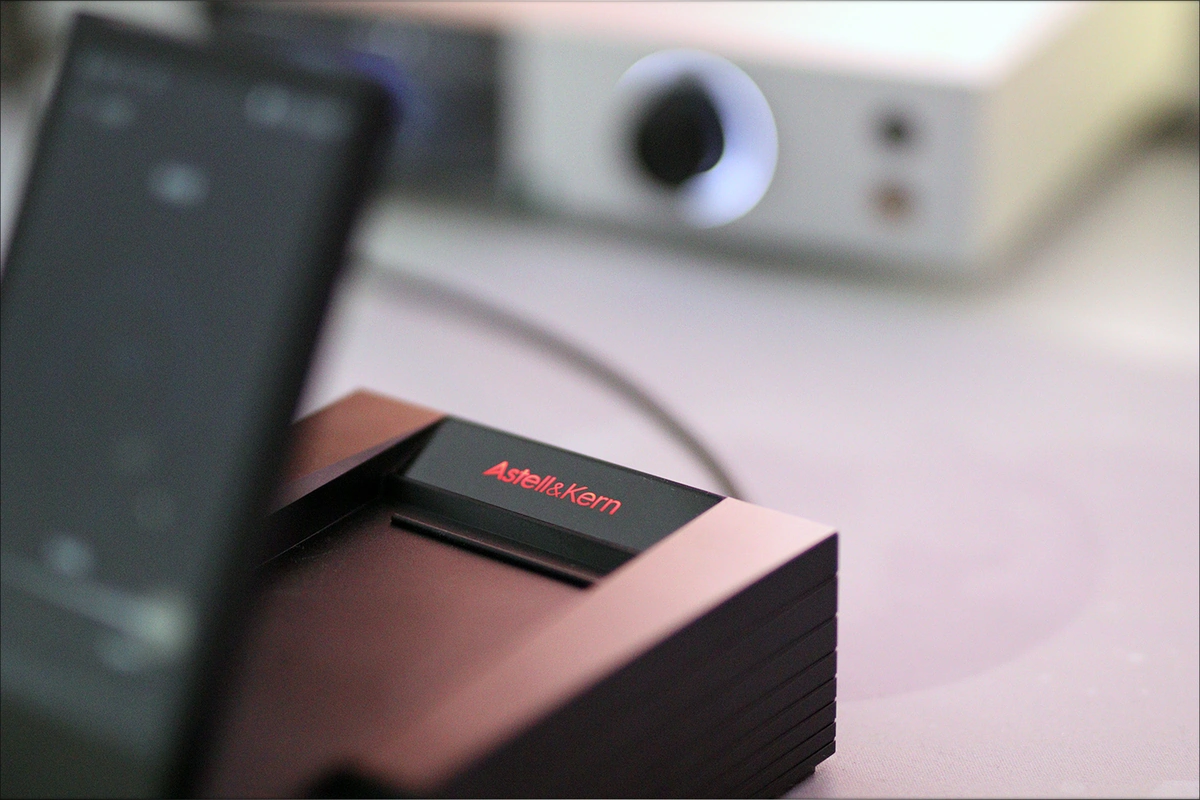
Speaking of which, Astell&Kern is the kind of company that is often called when people ask for a smooth sounding DAP, but this doesn’t mean a rolled-off sounding DAP, most of their music players can handle treble well, and instead of rolling it off, they can picture a smoother, cleaner treble that’s non-fatiguing, with a good amount of air, clarity and detail. Astell&Kern CA1000T has the kind of treble you actually dream of, which can be bright, sparkly and clean, but even with crispier sounding IEMs and Headphones will not sound metallic or harsh. The overall resolution and clarity of CA1000T is better than that of SP2000T, but so is the dynamic, maximum volume, and driving power, which creates better control over super hard to drive headphones, and this helps with the sound being deeper, more balanced, and having a cleaner, more natural treble. All in all, the signature is the kind of pleasing presentation that you actually get in your teens at a concert, and the emotion you get right from the first row. The soundstage of CA1000T is huge, both in depth and width, and it creates this kind of wide presentation with any IEM and headphone, but with HIFIMAN HE1000 V2, for example, the presentation has an endless space where it extends, without loosing the precision and clarity that you typically get with HE1000 V2.
Comparisons
Astell&Kern Acro CA1000T vs Lotoo PAW 6000 (2299 USD vs 1200 USD) – We have a strong contender in PAW 6000, which is clearly a more portable DAP, being much smaller, with a strong battery life, and a well-known gentle sound. Acro CA1000T has considerably higher driving power, with more dynamics and better impact, a more punchy sound, yet a somewhat smoother treble. The thing with PAW 6000 is that it is gentle in the presentation, with a somewhat lower impact level and a somewhat more gentle presentation, but it doesn’t have a smoother treble or a warmer sound, while Acro CA1000T sounds smoother and warmer in the treble, with a gentler upper midrange and treble. The bass is similar between them, but if you’re looking for streaming, PAW6000 is not the choice here, as Acro CA1000T has better streaming support. Between the two, if you need a portable, you need to go with a portable DAP, Acro CA1000T is one KG and large, but Astell&Kern has portable DAPs too, like Astell&Kern SE180.
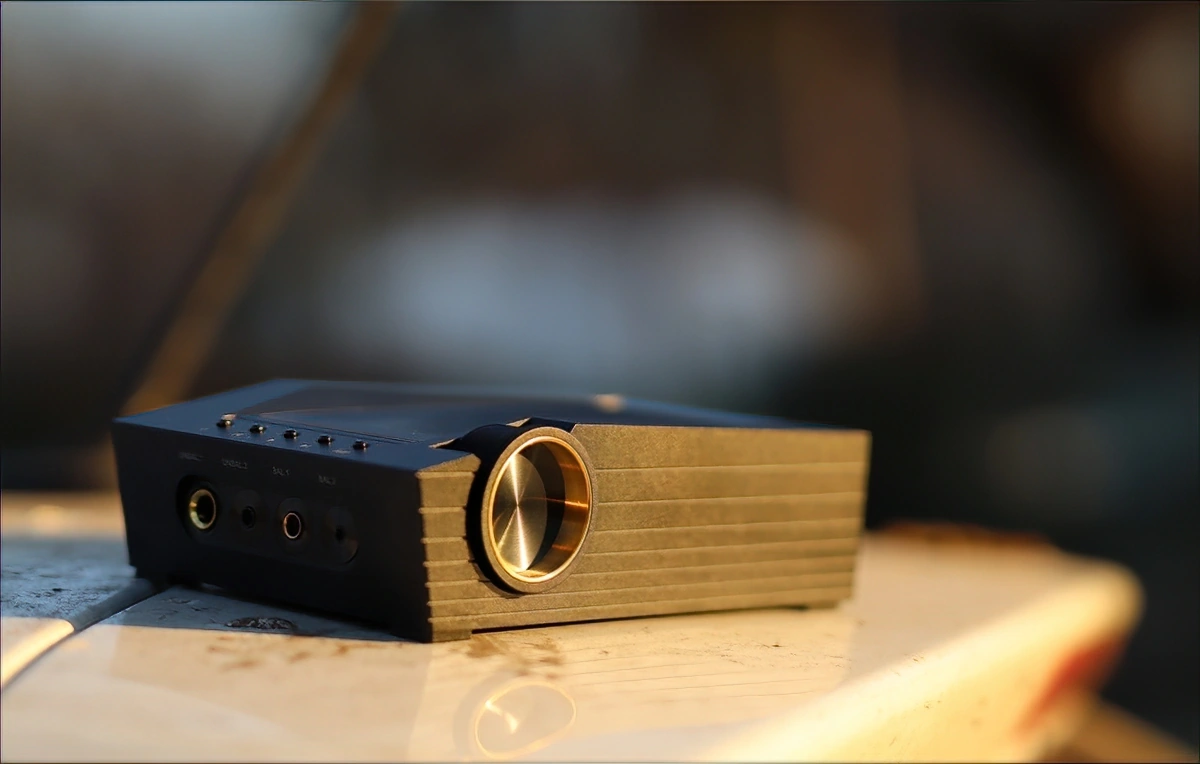
Astell&Kern Acro CA1000T vs iBasso DX220 MAX (2299 USD vs 1880 USD) – This is a fair comparison, as both are big size factor DAPs, mainly designed for desktop usage. Both have zero delay when used as a USB DAC, CA1000T is slightly better for desk usage as it has the display that can sit more vertically, while DX220 MAX can be taken outside somewhat better than Acro CA1000T. The tech inside of CA1000T is more novel, with nutube AMPs, while DX220 MAX is a fully solid state music player. The app and streaming support of CA1000T is somewhat better, although both are ok. The maximum driving power of Acro CA1000T in person is higher, it has more dynamics, a smoother overall signature, more musicality and color in the midrange, and sounds more vivid. DX220 MAX is bassier, and warmer in sound, with a more lush and a thicker sound. The input and output selection is much richer in CA1000T, with RCA output, optical and line in input, and with separate power and data type-C ports, while DX220 MAX needs a special power converter for the power, and doesn’t have 4 headphone outputs like Acro CA1000T.
Astell&Kern Acro CA1000T vs iBasso DX320 (2299 USD vs 1599 USD) – This one is a rather hard comparison because I really liked the DX320 and its sound, and physically it is more portable than ACRO CA1000T. Both can support pretty much the same apps for streaming, both can play MQA and hi-res files, including DSD, but if you need one to use as a USB DAC, CA1000T has no delay, while DX320 has some delay for the USB DAC function. The overall sound of DX320 can change quite a bit, especially if you strap on a different amplifier, and there’s a NuTube AMP module for it available as well. While for DX320 some users noted that using the NuTube Module with Wifi there is some noise, I can confirm that CA1000T has absolutely zero noise coming from this. DX320 has a lower hissing for super sensitive IEMs, while for hard to drive headphones, CA1000T has more driving power at maximum. The sound has similar dynamics, resolution and clarity, while CA1000T seems to take advantage of the NuTube a bit better, creating a more juicy sounding midrange, with a more musical presentation. The treble of DX320 tends to be a bit brighter, more sparkly, and with more air, while CA1000T tends to sound more relaxed and relaxing, and smoother.
Astell&Kern Acro CA1000T vs Astell & Kern A & Ultima SP 2000 T (2299 USD vs 2500 USD) – We actually have two DAPs made by Astell & Kern here, and as I see it, CA1000T is literally made on the tech seen with SP2000T, and I am not afraid to say this, it improved on the tech a lot, but you can say that this happened because they were much less space restricted than with SP2000T. The maximum driving power is much better on CA1000T, the sound is more punchy, more dynamic, has lower distortion when using the tube mode, and the hybrid mode is even better implemented. This, of course, happens naturally with CA1000T as there’s simply more space to implement higher capacity capacitors, better tube AMP spacing, and more space to dissipate the heat, implementing better DACs too. The downside of CA1000T is only tangible if you wanted to use either portably, as that’s totally possible and easy with SP2000T, but CA1000T will mostly stay bound to a desk. At any rate, if you have hard to drive headphones, especially high impedance ones, or planars with low sensitivity, CA1000T can deal a much higher volume, with better control, and seems to be a direct progress from the magical work Astell&Kern did with SP2000T.
Astell&Kern Acro CA1000T vs HIFIMAN R2R 2000 (2299 USD vs 2500 USD) – Starting with the build, R2R2000 surely is smaller easier to carry around, and also works mostly as a DAC/AMP, connected to a digital source via the type-C USB port it has. The main difference is in the tech, R2R2000 is an R2R DAC based DAP, but with a solid state amplifier, while CA1000T is a delta-sigma based DAP, with a SS/Hybrid/Tube AMP, and the biggest difference is in the driving power, as CA1000T has much more driving power, better impact and dynamics than R2R2000, while R2R2000 has slightly lower hissing with ultra sensitive IEMs (lower output impedance). The sound of R2R2000 is actually rather different from r2R DACs, which tend to be soft, as R2R2000 si dynamic, vivid and punchy, while CA1000T is a bigger, more dynamic and even more punchy DAP, with more driving power, but mainly made for desktop usage, given its 1 KG of weight and large size / shape.
Pairings
Astell&Kern Acro CA1000T + Westone MACH60 (2299 USD + 1100 USD) – I was a bit concerned about the super low impedance of MACH60, but surprisingly, from all the IEMs I tested with CA1000T, I seem to not notice the hissing almost at all with MACH60, but I totally notice how precise and clean CA1000T is and how well it can control MACH 60. The midrange-centric signature of MACH60 is surely helped by how dynamic, vivid, and detailed CA1000T is, and it sounds best in the hybrid mode, right in the middle.
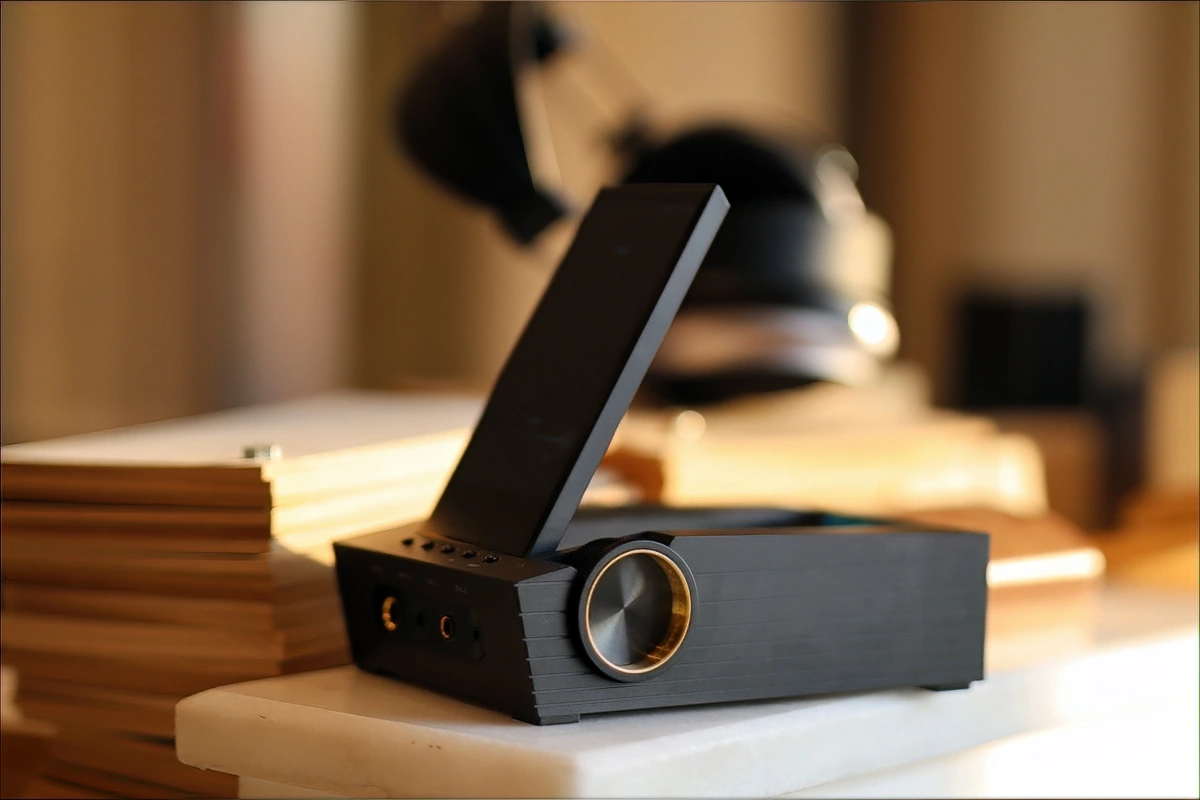
Astell&Kern Acro CA1000T + Audeze MM-500 (2299 USD + 1699 USD) – MM-500 is rather easy to drive most of the time, but it is interesting how something like CA1000T can easily reach a satisfying volume in less than 50% of its maximum volume, all whilst having all the maximum clarity, dynamics and impact it can have. In fact, I always said that MM-500 sounds like a mini LCD-5, and luckily I have LCD-5, to pair, and CA1000T can even drive LCD-5, closer to the maximum volume it can push, but still that is doable, and it doesn’t break a sweat. For both LCD-5 and MM-500, CA1000T sounds best with the Hybrid mode, at 50%, to blend in the sweeter, more musical midrange presentation, but also the precision, dynamics and impact of the solid state mode, blending together characters that make both MM-500 and LCD-5 even more pleasing than they already are.
Astell&Kern Acro CA1000T + FiR Audio Frontier Series NE4 (2299 USD + 2299 USD) – Fir Audio NE4 is another good IEM to test the hiss effect of CA1000T, especially since it is rather sensitive to it, and while with music stopped, you can hear the specific sss sound in the background very quietly, even with music at super quiet levels I can’t say that I’m noticing it at all, but what I can notice is that CA1000T has outstanding control, dynamics and punchiness while driving NE4. The overall presentation and signature is super clean, detailed, V-Shaped, with a strong sub-bass , strong and airy treble, and a smooth and recessed midrange, as NE4 tends to sound with most sources. What’s special with CA1000T is how magically sweet, vivid and dynamic guitars sound, especially in the hybrid mode, and also how wide and holographic the soundstage can be.
Astell&Kern Acro CA1000T + HIFIMAN HE1000 V2 (2299 USD + 2999 USD) – HE1000V2 is the headphone I go to mostly when I want to have a relaxing experience, as it is light, large, and with a comfortable headband, and earpad selection, so it makes sense that the sound is also fairly smooth, somehow CA1000T can tame HE1000V2 in the treble, all whilst keeping the excellent resolution, impact and dynamics intact. This happens regardless of the tube mode used. HE1000 V2 prefers the Solid State mode a bit, since the midrange is already fairly rich and has a good number of harmonics, and it never sounds thin or harsh, so the extra detail, resolution and clarity of the solid state mode, plus the slightly better dynamics and impact seem to help HE1000 V2 sound more direct and live.
Astell&Kern Acro CA1000T + Dita Perpetua (2299 USD + 2999 USD) – We have a super detailed, clean and deep sound when pairing Perpetua with CA1000T. The IEMs usually have a super high precision and impact, but CA1000T is truly able to highlight each nuance in the bass, all while giving Perpetua a wide and well separated sound, that’s detailed, clean and vivid. Guitars in particular are pleasing with all bands sounding as they would live, including Utsu-P, Attila, and even Metallica, everything falls right into its intended place, with the treble being a bit recessed, clean, smooth and pleasing. The signature is the kind of bold, impactful yet musical presentation that I can enjoy for endless hours without getting bored. Since Perpetua is a rather sensitive IEM, this is a good moment to note that I can never hear any hissing while music is playing, although with music stopped, there’s a slight, faint hiss in the background.
Value and Conclusion
It was clear from the start that the price of Acro CA1000T was not going to be cheap, but I found that it comes at a much more affordable price than I first expected, and given the current market, and what it is able to offer, it has an actually excellent price performance ratio. It is actually hard to find anything that comes even close in terms of price / performance ratio, and you could easily be spending more than 3000 USD on an amplifier alone that could come close to the kind of sound CA1000T can produce, not even mentioning that there are next to no amplifiers out there that can use a hybrid mode, SS mode or full tube mode, and which can freely switch between those.
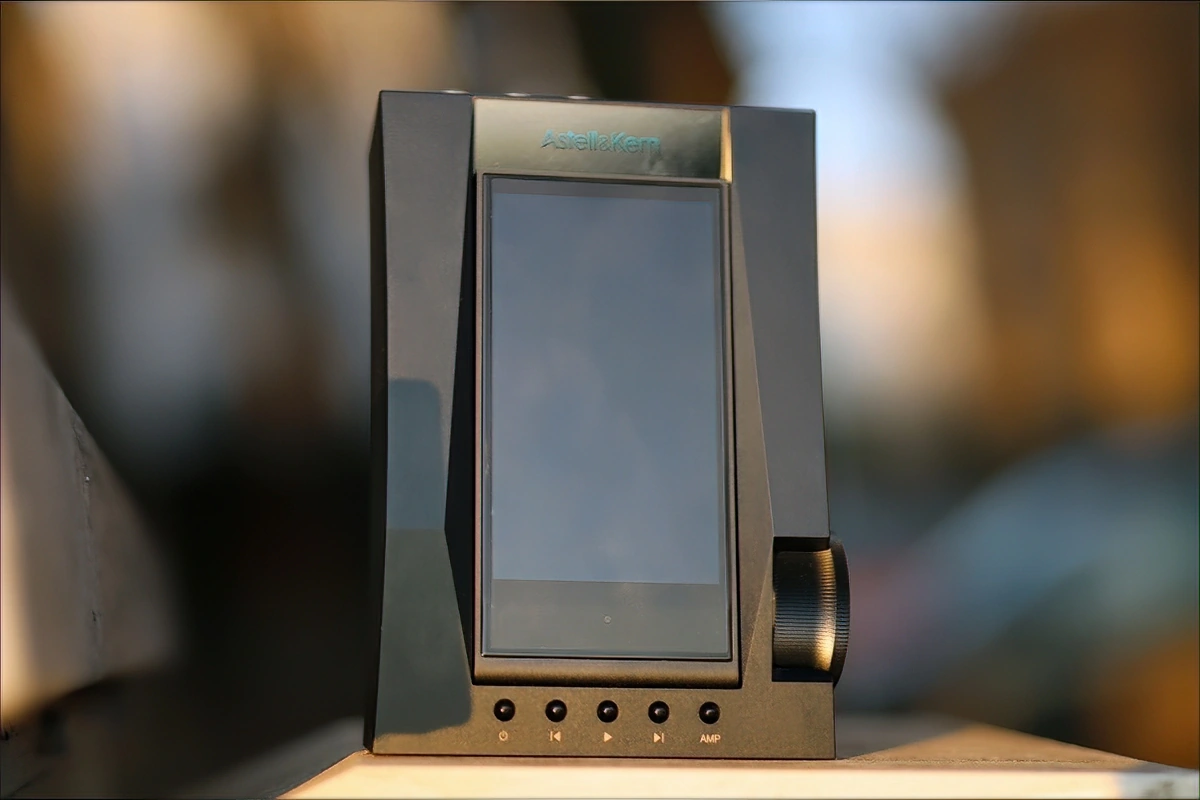
Before the end of today’s review, I am going to add Astell & Kern Acro CA1000T to the Audiophile-Heaven Hall Of Fame as one of the best music players that have ever been designed, both for desktop, portable, or any other job. It is simply brilliant, and it easily earns its place in my hall of fame for its superb performance, great build quality, zero interference sound, along with Astell&Kern’s outstanding support behind.
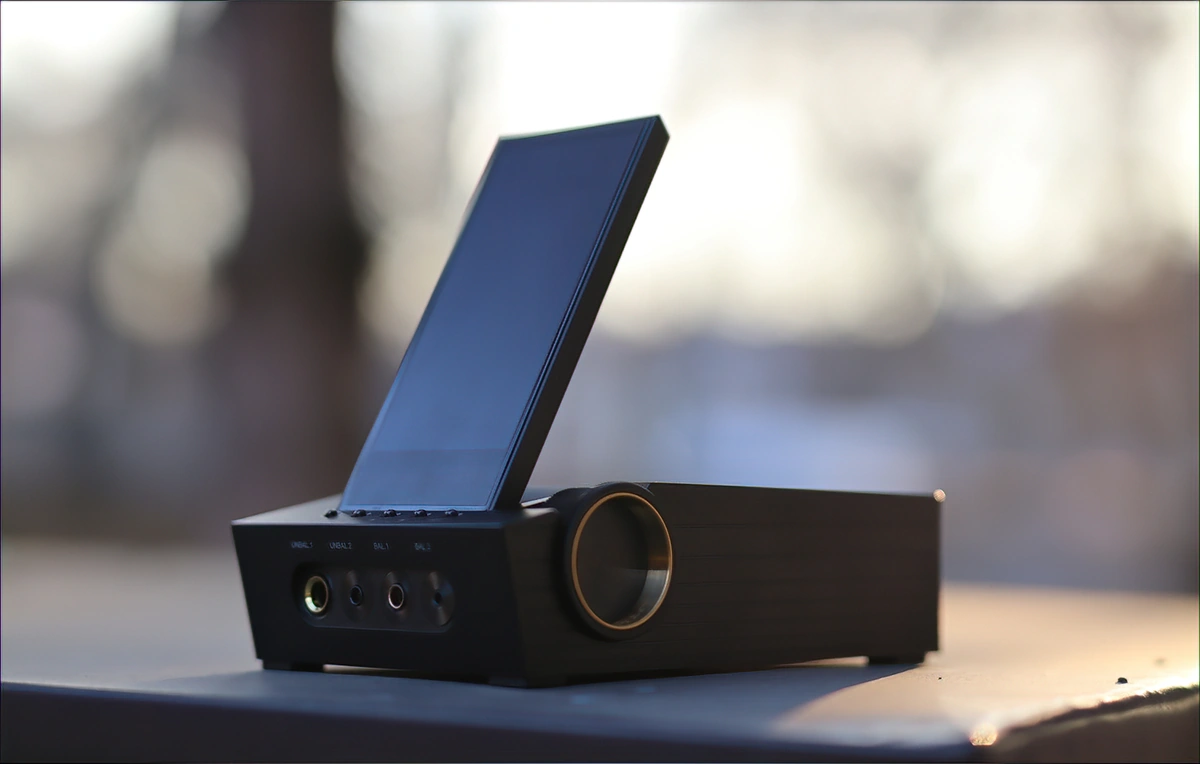
At the end of the day, if you’re looking for a really strong DAP, and not just any DAP, but a music player that you will always use when you’re at your desk, which has 4 headphone outputs, a selection to serve any needs, DAC output, and with both a Solid State and a Tube mode, and a Hybrid mode where you can literally pick how much character from each goes into your sound, Astell&Kern Acro CA1000T is literally the best to purchase at this moment.
Product Link
You can grab one from www.amazon.com here: https://amzn.to/41ktsoh
You can grab one from the official store here: https://us.astellnkern.com/products/acro-ca1000t
If you’re in the UK, you can grab one from www.amazon.co.uk here: https://amzn.to/3IsPBrL
And if you’re from Europe, you can grab one from www.amazon.de here: https://amzn.to/3XVdj5W
--- Please remember to stay safe, and always have fun while listening to music!---
- If you have a dime to spare, please donate, and help us! It would make the day brighter for me and my wife-
Full Playlist used for this review
We listened to more songs than those named in this playlist, but those are excellent for identifying a sonic signature. I recommend trying most of the songs from this playlist, especially if you’re searching for new music! The playlists are different for Spotify, Tidal and Youtube, and based on the songs I enjoy and are available on each!
https://www.youtube.com/playlist?list=PL_cjBXGmwSHSdGcwuc_bKbBDGHL4QvYBu
https://open.spotify.com/playlist/5J3oloz8Riy9LxEGenOjQ0?si=979ba4f082414be7
https://tidal.com/browse/playlist/330fd544-8e5b-4839-bd35-676b2edbb3d5
--- Contact Us ---






[…] will compare D17 with other DAC AMPs including iBasso DX340 (1699 USD), Lotoo PAW GT2 (3200 USD), Astell&Kern ACRO CA1000T (2299 […]
[…] to place the DX340 against some of the titans in this industry, including Lotoo PAW GT2 (3200 USD), Astell&Kern ACRO CA1000T (2299 USD) and HIFIMAN R2R2000 (2500 USD). We will also explore pairings with HIFIMAN Susvara […]
[…] Car Keys, and other accessories, including a heavyweight stack of iBasso D16 + iBasso PB5, and even Astell & Kern ACRO CA1000T, so I felt it was time I wrote a fuller review about this useful side bag that I’ve used for […]
After reading this very competent review (many thanks and regards), it seems to me that DAP have now reached a fairly high level of sound quality. I’m now considering replacing with a DAP: my streamer (Auralic) + DAC (Schiit Yggdrasil) + pre/headphone amplifier (Questyle CMA Twelve Master). Then I could connect my power amplifier (Lindemann 858) to it with an XLR cable (Tellurium Q silver diamond). Do you think it’s (almost) equal in terms of sound quality?
I was thinking of either: K&K AK 380 + Dock (has native XLR out)
or
A&K Acro CA1000T (has mini XLR out)
or ?
Please, does anyone further have experience with this or a solid opinion about the case? Thank you very much for a comment!
Best wishes! Ronny
Dear Ronny,
Thank you for your kind words! I personally think that CA1000T would work as well as AK380 + Dock, but the sound would likely be different. As CA1000T is really neutral and reference, I would get it only if you wanted this kind of signature.
[…] iBasso D16 Taipan to other similarly priced units, including iBasso DX320 MAX Ti (3499 USD), Astell&Kern Acro CA1000T DAP (2299 USD), Dethonray Listening M1 (2599 USD), Astell&Kern A&Ultima SP2000T (2500 USD) and […]
[…] we will review it, every aspect of its usage, and compare it to other high-end DAPs, including Astell & Kern ACRO CA1000T (2299 USD), iBasso DX320 (1599 USD), Dethonray DTR1+ (1000 USD), iBasso DX240 (950 USD), and Lotoo […]
[…] and a SPL of 108dB / 1mw, so any high-end source will do well. I have been pairing SR3 with Astell & Kern ACRO CA1000T, iBasso DX220MAX, Hiby R6 III, Lotoo PAW 6000, and desktop setups too. The desktop setups include […]
Just received mine, love it! Thank you for all your help!!
I love CA1000T so ᴠery mucһ!! Thank you from the bottom of my heart for recommending it to me!!!!
[…] impedance of 16 OHMs, and a super high SPL of 112 dB, but they are somewhat hard to drive, on both Astell & Kern ACRO CA1000T and Hiby R6 III, they sit at about half of the max volume for a comfortable listening for my ears. […]
Hi George,
Excellent review … Any idea how the CA1000T would compare to a Naim Uniti Atom Headphone edition?
Cheers Willem
Thanks for finally writing about Astell Kern Accro CA1000T
Loved it!
[…] I powered up on connectors, jacks and converters, to be able to test everything, and mainly used Astell&Kern ACRO CA1000T, iBasso DX320, and Lotoo PAW 6000 as sources, with HIFIMAN HE1000 V2, Spirit Torino Super Leggera, […]